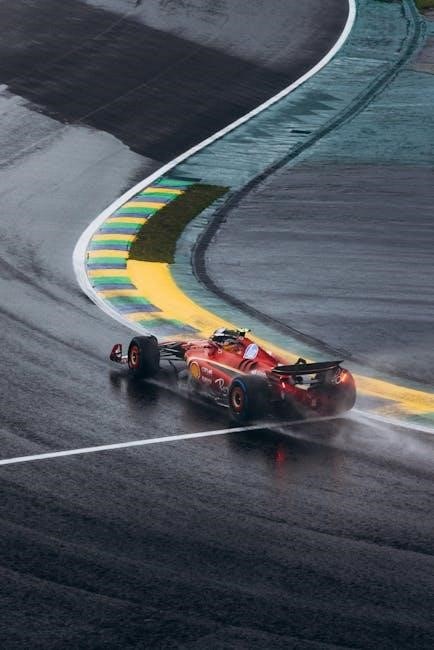
Background Information on Manual Override Mode
Explanation of Manual Override Mode
How Manual Override Mode Works in F1
Manual override mode in F1 works by allowing drivers to manually deploy additional power from the MGU-K at high speeds, using a specific function to override the default settings. This mode is designed to provide a temporary boost of power, enabling drivers to gain an advantage when overtaking or defending their position. The system is optimized to work in conjunction with the car’s energy recovery system, ensuring that the deployment of extra power is balanced with the need to conserve energy. The manual override mode is activated by the driver, who can choose when to deploy the extra power, giving them greater control over the car’s performance. The system is designed to be user-friendly, with clear indicators and warnings to ensure that the driver is aware of the mode’s status and can adjust their driving accordingly. The manual override mode is an important innovation in F1, providing a new level of strategy and excitement to the sport.

Benefits of Manual Override Mode in F1
Increased Overtaking Opportunities with Manual Override Mode
The manual override mode is designed to increase overtaking opportunities in Formula 1, allowing drivers to deploy more power from the MGU-K at high speeds. This feature enables drivers to gain a significant advantage when attempting to overtake, making the racing experience more exciting. With the manual override mode, drivers can optimize their energy deployment to achieve higher speeds on straights, creating more opportunities for overtaking. The mode is expected to enhance the overall racing experience, providing fans with more thrilling moments. By allowing drivers to deploy more power, the manual override mode increases the chances of successful overtakes, making the sport more competitive and engaging. The introduction of this mode is a significant development in Formula 1, aimed at improving the racing experience and providing more excitement for fans. The manual override mode is a key feature in the upcoming regulation changes, set to be implemented in 2026.

Comparison with DRS System in F1
Differences between Manual Override Mode and DRS

Technical Details of Manual Override Mode
Energy Deployment Optimization in Manual Override Mode
Energy deployment optimization is a crucial aspect of manual override mode, allowing drivers to maximize their speed and performance on the track. The system is designed to optimize energy deployment, gradually decreasing after a certain speed threshold is reached. This means that drivers can benefit from an additional amount of energy, giving them a significant advantage when it comes to overtaking and catching up with other cars. The optimization of energy deployment is made possible through the use of advanced technology and sophisticated algorithms, which work together to ensure that the energy is deployed in the most efficient way possible. The result is a more exciting and dynamic racing experience, with drivers able to push their cars to the limit and beyond. By optimizing energy deployment, manual override mode is able to provide a significant boost to performance, making it an essential tool for drivers competing at the highest level.

Implementation Timeline for Manual Override Mode in F1
The implementation timeline for manual override mode in F1 is set to begin in 2026, with the new system being introduced as part of a broader package of regulation changes. According to reports, the new mode will be phased in over the course of the season, with teams and drivers having the opportunity to test and refine the system during pre-season testing. The FIA has confirmed that the new mode will be mandatory for all teams, and will be used in conjunction with other safety and performance-enhancing technologies. As the sport continues to evolve and innovate, the introduction of manual override mode is seen as a key step forward, and is expected to have a major impact on the competitiveness and excitement of F1 racing. The implementation timeline is subject to change, but it is expected that the new mode will be fully operational by the start of the 2026 season.




